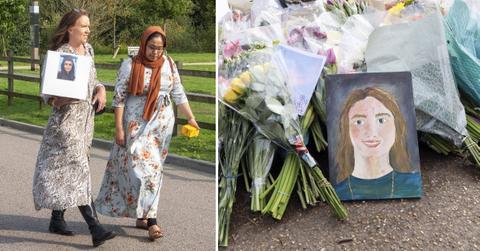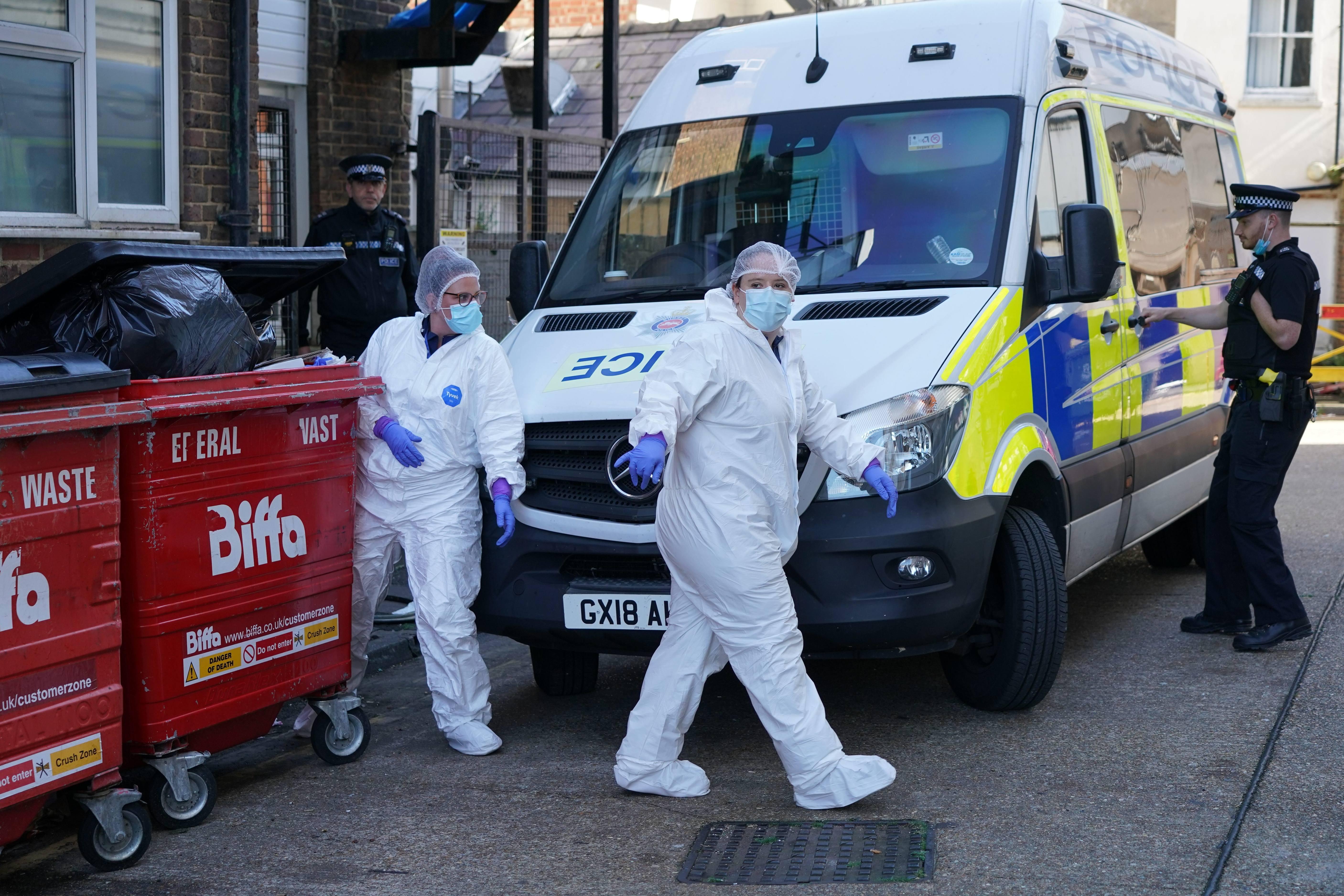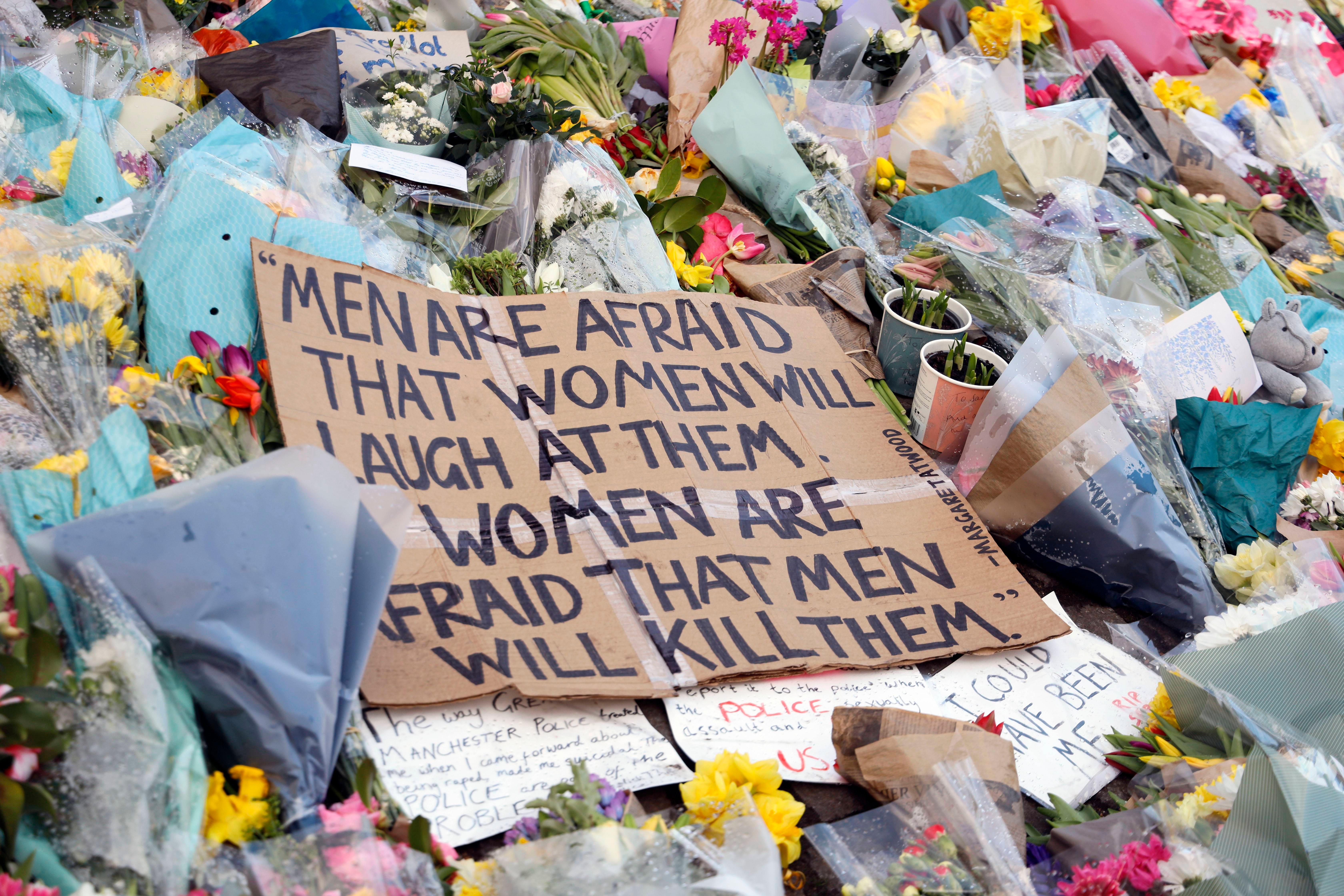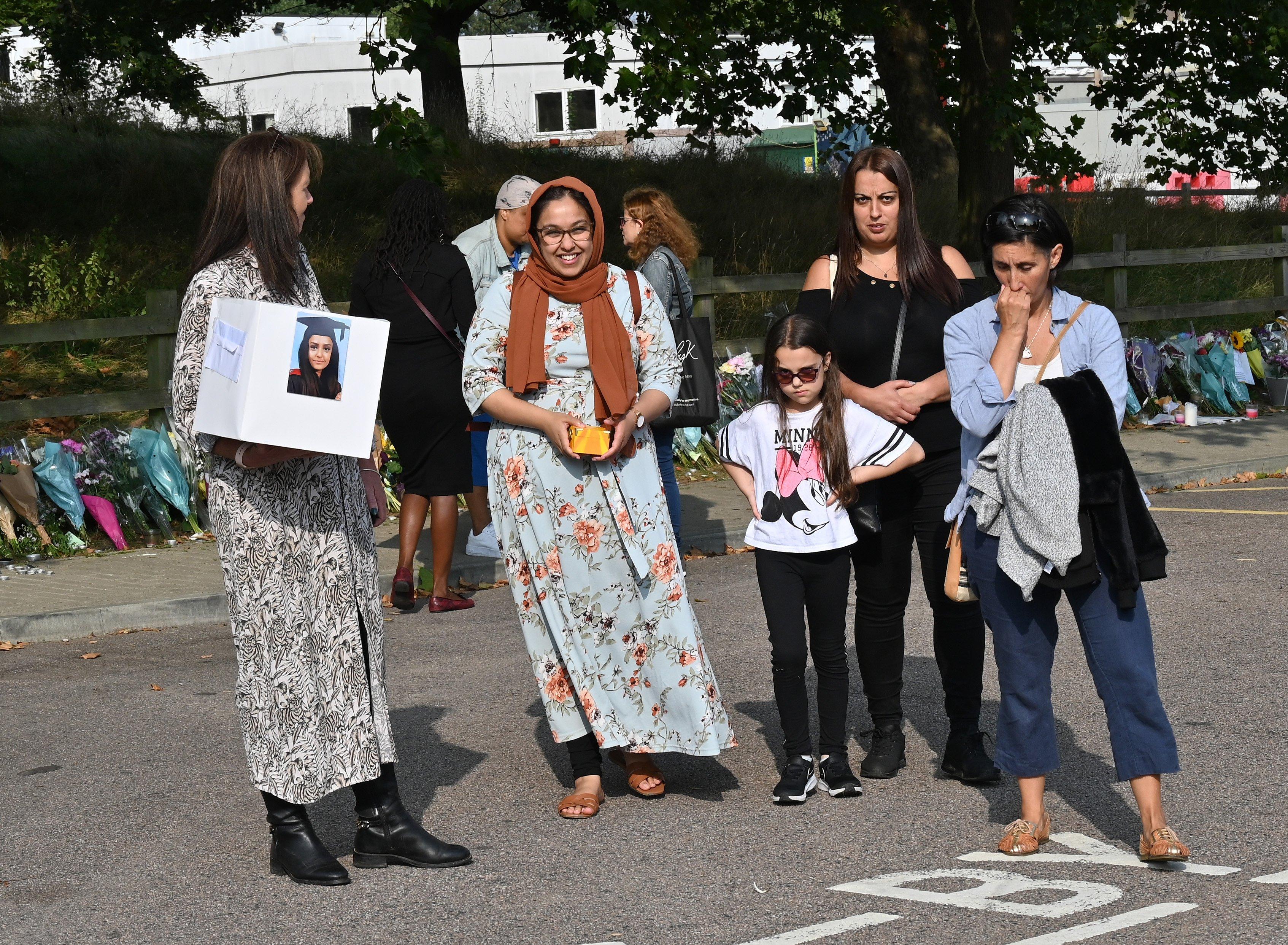Danger on the streets: Two Brits were walking in London, only to find their killer along their path

Today Wayne Couzens stood in court on charges of kidnapping, rape and murder. Six months ago, Couzens allegedly abducted a 33-year-old woman from a busy street in London on a cold March night. Sarah Everard was walking home when she was taken, whisked away in a car her murderer had rented
Her body was not discovered for a week. Couzens was captured shortly after, once Everard was identified based on dental records, after his face showed up on multiple cameras speaking with the victim the night of her disappearance, according to BBC News.
After police arrested Couzens, 44, they zeroed in on a wooded property he and his wife owned outside of the city, in the vicinity of a wilderness area near the town of Deal. After authorities recovered Everard’s remains, an autopsy determined she had been sexually assaulted and strangled, according to The Evening Standard.
Couzens, who told elaborate tales after his arrest, had served a few years with the Metropolitan Police force but was among officers authorized to carry a gun, according to The Independent.
Last week, another homicide in London, resulting in the death of a 28-year-old primary teacher, Sabina Nessa, brought up the fresh wounds in the wake of the Everard tragedy. She, too, was walking home along a busy London street.
The city was outraged that a police constable allegedly murdered Everard, but they are infuriated by the level of violence against U.K. women in general and brokenhearted that another innocent victim met her fate the same way.
It was a Friday night, around 8:30 p.m. when a man came out of the darkness and attacked Nessa. The schoolteacher was beaten to death on Sept. 17, but her body was not found until the following afternoon in nearby Cater Park in Kidbrooke, southeast London. She’d been murdered in Pegler Square, a few minutes from her home. Her body was noticed by a passerby walking through the park, according to The New York Times.
Now, the killings have left England on edge as two women met their fate on the streets of London.
THE DEATH OF SABINA NESSA
Officials suspect the weapon used to kills Nessa is a red object, possibly a drink can, which is seen in the suspect’s hand shortly after the crime occurred and documented on CCTV video.
Ten days after her body was discovered, a 36-year-old man caught on camera was arrested and taken into police custody. Although two men were previously arrested and questioned, neither was held for more than a few hours.
Detectives have five days — until the early morning hours of Sept 30 — to question the latest suspect. All three male suspects were tracked down after police asked for help identifying them on CCTV footage released to the public. Like Everard, Nessa’s killing was captured quickly because London is blanketed with hundreds of thousands of government video cameras.

Police investigate the killing of Sabina Nessa.
The U.K. is famous for having CCTV cameras positioned throughout major cities, and police routinely use footage to identify criminals and help locate crime victims. It is estimated that there are 691,000 cameras in London alone.
Police released a 12-second color video showing a man pulling at his coat hood as he looked over his shoulder. He was wearing a black hooded coat, light gray jeans and black sneakers. The footage is brief, but it shows him trying to hide a red object, according to The Daily Mail.
The suspect in Nessa’s murder walks toward the camera and would be recognizable to anyone who knew him — a young white male with brown hair, balding and semi-bearded. After the public got a look at the video, someone came forward to identify him.
Authorities believe the red object he is seen stashing away in his coat sleeve was the murder weapon, based on the timeline, camera footage, and his location relative to where the crime occurred.
The motive for the killing remains unclear. Stranger-on-stranger homicide is the least likely type of killing. Most women (and men) who die by violence are murdered at the hands of a man they know. According to a report by The Centers for Disease Control, 55 percent of female homicide victims are killed by partners, a statistic that is consistent across national, ethnic and racial lines.
Male homicide victims rarely die at the hands of their partners but nonetheless are more frequently killed by friends or acquaintances than strangers.
Stranger violence, which seems to be what killed both Nessa and Everard, accounts for about 1 in 4 homicides in the U.K. This includes homicides in which the perpetrator remains unknown, according to a 2018 government report.
THE OUTCRY OVER EVERARD’S MURDER
Everard’s death was reported widely. She was a relatable figure, a successful professional in the prime of her life out for a drink on a Friday night. Her abduction by a law enforcement officer added insult to injury, as British women are angry with feeling unsafe on their own streets.
When Everard’s body was found, police concluded she died at the hands of a stranger. When the man approached her on a busy London street, he likely used his position of authority to persuade her to get into his vehicle.
Everard’s tragic death pushed many women to the breaking point because she, a successful and street-savvy female, did everything right. She wore brightly colored clothes, stayed in contact with someone on her cell phone, stayed on a busy street and was cautious about her alcohol intake.
Her case galvanized frustrated onlookers and fellow victims. Many felt they could see themselves in her, a woman who took every precaution on her way home and was murdered anyway.
A clear video image of Everard was captured, as she walked in colorful clothing, practical against a cold night, down a major road in Clapham, talking on her cell phone and wearing a COVID-19 mask. Later, she was seen standing next to Couzens outside his rental car, according to reports from BBC News. Several cameras, including a doorbell cam and a dashcam, caught the rental vehicle with Couzens driving it, as it left the city and headed southeast toward Kent.

A memorial to Sarah Everard.
On March 9, when Couzens was arrested in connection to the murder, he sensed he was cornered and wiped out all the data on his mobile phone, according to BBC News.
Six months later, a young and promising elementary school teacher would meet a similar fate. Like Everard, she is a relatable figure and a true victim.
THE PUBLIC RAGE
Nessa’s death continues to fuel large public protests, as huge numbers of U.K. women demand action beyond the usual steps to quell violence against females, such as upping police forces and setting curfews.
London’s mayor, Sadiq Khan, told Good Morning Britain, “we have to give this issue the same seriousness we give other issues,” adding the time has come to “make misogyny a hate crime.”
Activists are calling for changes to an old-boy culture within policing as they point to alarming statistics about how many police constables are part of the problem of violence against women—and how many go unpunished.
Despite the presence of CCTV cameras throughout all major U.K. cities, assaults on main streets still occur. The police as an organization are believed to be part of the problem, and statistics bear this out. Everard’s death brought people into the streets, as her killer was allegedly a gun-wielding police constable.
Authorities speculate Constable Couzens may have used his police credentials to get her into his rental car.
Women who continue to protest against Everard and Nessa’s murders — and the level of violence against other female victims —are enraged because many of them have been victims, too. Activists can point to their own trauma while reciting the dismal statistics about crimes against women that take place in the U.K. More than 70 percent of women in the U.K. reported being victims of public sexual harassment, according to a United Nations report.
THE POLICE PROBLEM
In 2019, The Independent reported that 562 police officers were accused of sexual assault between 2012 and 2018 but only 43 (8 percent) faced disciplinary action, up to and including arrest. That number, 562, only accounts for a fraction of actual sexual assaults, however, since it is well known that rape and sexual harassment are underreported, particularly when the perpetrator is unlikely to face criminal consequences.
Of the accusations against those officers, 313 came from the public. Another 249 were filed by fellow officers or co-workers.
Police investigators, who are now tasked with investigating and helping to prosecute Everard and Nessa’s homicides, are being let off too easy. Only 1 in 18 who are accused of sexual misconduct are ever disciplined.
In June 2016, a Scotland Yard officer assaulted a sleeping woman on a train, then became aggressive when two other men intervened. Kyle Blood, a seasoned police officer, was found not guilty in a court of law but was dismissed and relieved of duty after a review of the incident, including eyewitness testimony, according to The Independent.
SOBBERING STATS
Statistics show violence against women in the U.K. isn’t the worst in the world—countries such as Costa Rica and Mexico, along with Sweden, have bigger problems—but it’s far from acceptable. The problem in the U.K. is longstanding and, activists say, often related to police's lackadaisical attitude in pursuing crimes.
The justice system, they argue, doesn’t take harassment and sexual assault seriously. Men get away with it, and when they are not prosecuted, they continue to offend. “Rape culture” is alive and well at U.K. schools, particularly elite ones, and on the streets, some claim.
Women from all corners of the U.K. who are frustrated by societal conditions that allow violence against women are speaking out. The police response to the initial outcry over Everard’s death was to pass sweeping legislation nationwide to reduce violence against women, while making it harder to protest in public.
Women fighting for laws that punish rape and femicide (murder of women) expressed doubts that the news laws will change anything, especially since more policing means public demonstrations are threatened.

Jebina Yasmin Islam, the sister of murdered teacher, Sabina Nessa arrives at the flower tributes laid by members of the public in Kidbrooke, South London where Sabina died.
Considering it was a policeman in custody for allegedly abducting and murdering Everard, the presence of more police on the streets is not comforting. It doesn’t guarantee, or even promote societal changes that put the onus on men to stop the violence. As the New York Times noted, such expanded police powers “would only leave women more vulnerable” to violence.
Some of the proposed new laws include restrictions on protests, leading to more violence in the streets, including police in riot gear subduing protestors.The law would give police more power to control start and stop times and set noise limits, effectively shutting down street protests they deem “too loud.”
They could enforce such rules even during a protest conducted by one person. This means they could target one individual for violating any of these rules, singling out protestors for fines and punishments, according to The BBC.
The bill is currently working its way through Parliament, under review in the House of Lords.
London mayor Khan and others suggest classifying murder against women as a hate-crime. This would be one step to ensuring criminal penalties are more severe.
Activists are demanding deep societal changes, including addressing problems in male-dominated police culture. U.K. women who are reacting to the spate of murders and the ongoing issue of domestic violence as a primary factor for female victims want to see a shift in cop culture on par with “defund the police” movements.
Some of the public furor is being fueled by the “{MeToo” movement, which has organized women from all walks of life and levels of society to unite in defeating violence and sexual harassment.
Everard and Nessa are only two women who've died needlessly walking London's streets. Women vow to keep their names in the spotlight by continuing to push against a system they see as failing to punish the perpetrators while asking women to continue bearing the burden of violence.
Women are still routinely told to follow curfews, take safety precautions, travel in groups, and alter their daily lives—to stay alive. Even if it didn’t help Everard and Nessa.
Become a Front Page Detective
Sign up to receive breaking
Front Page Detectives
news and exclusive investigations.
